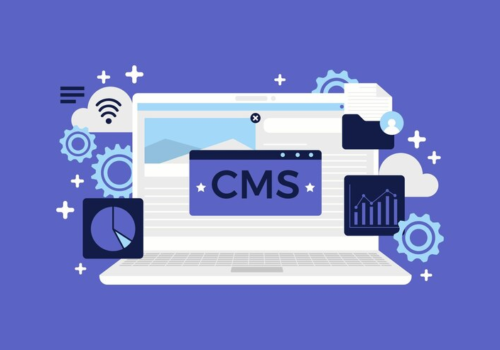WordPress vs HTML5: Comparing Web Development Tools
The landscape of website development has continually evolved, with various platforms offering unique advantages. In this context, WordPress and HTML5 represent two significant but distinct approaches. WordPress, a comprehensive content management system (CMS), contrasts sharply with HTML5, a cornerstone technology of the internet used for structuring and presenting content. This post aims to dissect these two platforms, offering insights into their functionalities, advantages, and limitations.
Understanding WordPress
WordPress: Born as a blogging platform, it has evolved into a versatile CMS used by millions worldwide. Its key features include a user-friendly interface, extensive theme and plugin directories, and a robust community. WordPress allows users with minimal coding experience to create and manage websites efficiently. Its flexibility caters to various needs, from simple blogs to complex e-commerce sites.
Understanding HTML5
HTML5: The latest version of HyperText Markup Language, HTML5, is the backbone of web page structure and content. It introduces new elements and APIs, enhancing multimedia capabilities and semantic richness. HTML5 is instrumental in creating responsive, cross-platform web applications. Its role in modern web development is pivotal, particularly in creating custom and high-performing websites.
Ease of Use and Accessibility
WordPress stands out for its ease of use. Its graphical interface and vast array of themes make website creation accessible to beginners. In contrast, HTML5 requires a good understanding of coding, appealing more to developers and those comfortable with HTML, CSS, and JavaScript.
Customization and Flexibility
WordPress’s plethora of themes and plugins offers vast customization options, catering to a wide range of styles and functionalities. On the other hand, HTML5 provides unmatched flexibility in building bespoke websites, albeit with a higher technical requirement.
Performance and Optimization
In the realm of optimization, while WordPress websites can sometimes suffer from bloated code due to plugins and themes, a range of optimization tools are available to counteract this. Optimization in WordPress often involves streamlining themes, reducing the number of plugins, and utilizing caching mechanisms. This process can significantly improve site speed and performance. Additionally, there are various plugins specifically designed for performance optimization, which can compress images, minify CSS and JavaScript, and enable lazy loading. These tools help in keeping the WordPress site as lean and efficient as possible.
HTML5, known for its lean and clean code, can lead to faster, more efficient websites, especially when optimized correctly. HTML5 facilitates the creation of cleaner markup, which is inherently more efficient and faster to process. Its semantic elements improve site structure, making it easier for browsers to render pages. Moreover, HTML5’s compatibility with modern web standards ensures that websites are optimized for performance across different browsers and devices. When developers adhere to best practices in HTML5 coding, they can create websites that are not only visually appealing but also exceptionally fast and responsive.
Security Aspects
WordPress’s immense popularity inevitably makes it a target for security threats. However, the platform is equipped with measures to mitigate these risks. Regular updates provided by WordPress are crucial for maintaining security, as they often include patches for known vulnerabilities. In addition, a wide array of security plugins is available to WordPress users, offering features like firewalls, malware scanning, and brute force attack prevention. These tools, combined with best practices such as strong passwords and regular backups, help in keeping WordPress sites secure.
HTML5’s security depends largely on how the code is written, requiring developers to adhere to best practices. Since HTML5 allows for more complex applications, developers need to be vigilant about potential security loopholes. This includes ensuring proper data validation, employing secure APIs, and avoiding common vulnerabilities like cross-site scripting (XSS). By following these best practices, HTML5 can be used to build secure web applications. However, unlike WordPress, HTML5 does not have a centralized system for updates and security patches, placing more responsibility on the developer to stay informed about the latest security trends.
SEO and Mobile Responsiveness
WordPress offers robust tools for SEO, making it easier to optimize websites for search engines. Plugins like Yoast SEO provide a comprehensive suite of features to enhance SEO, including keyword optimization, readability checks, and sitemap generation. These tools simplify the process of optimizing web content and structure for better search engine visibility. WordPress’s SEO-friendly nature is further enhanced by its responsive design capabilities, ensuring that websites perform well across all devices.
HTML5 plays a significant role in SEO and mobile responsiveness. Its semantic elements help in structuring content more effectively, making it easier for search engines to understand the context and relevance of web pages. This semantic structure is a key factor in SEO, as it contributes to clearer indexing by search engines. Additionally, HTML5’s mobile-first approach is particularly beneficial in today’s mobile-dominated internet usage. Websites built with HTML5 are inherently more responsive, adapting seamlessly to various screen sizes and resolutions. This responsiveness not only provides a better user experience but also positively impacts SEO, as search engines like Google prioritize mobile-friendly websites in their rankings.

Cost and Resource Implications
WordPress can be cost-effective, with many free themes and plugins, but costs can accumulate with premium features. HTML5 development may require more resources initially, especially if hiring developers, but can be more cost-effective in the long run for custom projects.
Conclusion
Choosing between WordPress and HTML5 is a decision that hinges on individual requirements, technical expertise, and long-term digital goals. WordPress stands out as an ideal solution for those who are seeking an easy-to-use, customizable platform backed by a vast support community. Its user-friendly nature makes it accessible even to those with minimal technical background. The extensive array of themes and plugins allows for a high degree of customization, enabling users to tailor their sites to their specific needs and preferences without necessarily delving into code. Furthermore, the strong community support means assistance and resources are readily available, which is invaluable for troubleshooting and learning.
For individuals or organizations that require a highly tailored website and possess the necessary coding skills or resources, HTML5 emerges as a more fitting choice. HTML5 provides a robust foundation for building websites from the ground up, offering greater control over every aspect of the website’s design and functionality. This control is particularly beneficial for projects that demand unique features or specific performance optimizations that go beyond the scope of standard WordPress themes and plugins. Additionally, HTML5’s emphasis on clean, semantic code is advantageous for developers aiming to create lightweight, fast-loading websites with a focus on modern web standards.
Both WordPress and HTML5 offer unique advantages and can be the perfect solution in different scenarios. WordPress is unparalleled in its ease of use and extensibility, making it a top choice for content-focused websites, blogs, and small to medium-sized business sites. HTML5, on the other hand, caters to those who prioritize custom development, seek to implement cutting-edge web technologies, and require a more hands-on approach to their web presence. The decision between the two should be guided by the specific needs of the project, the technical proficiency of the user or team, and the desired level of control over the website’s functionality and design.





